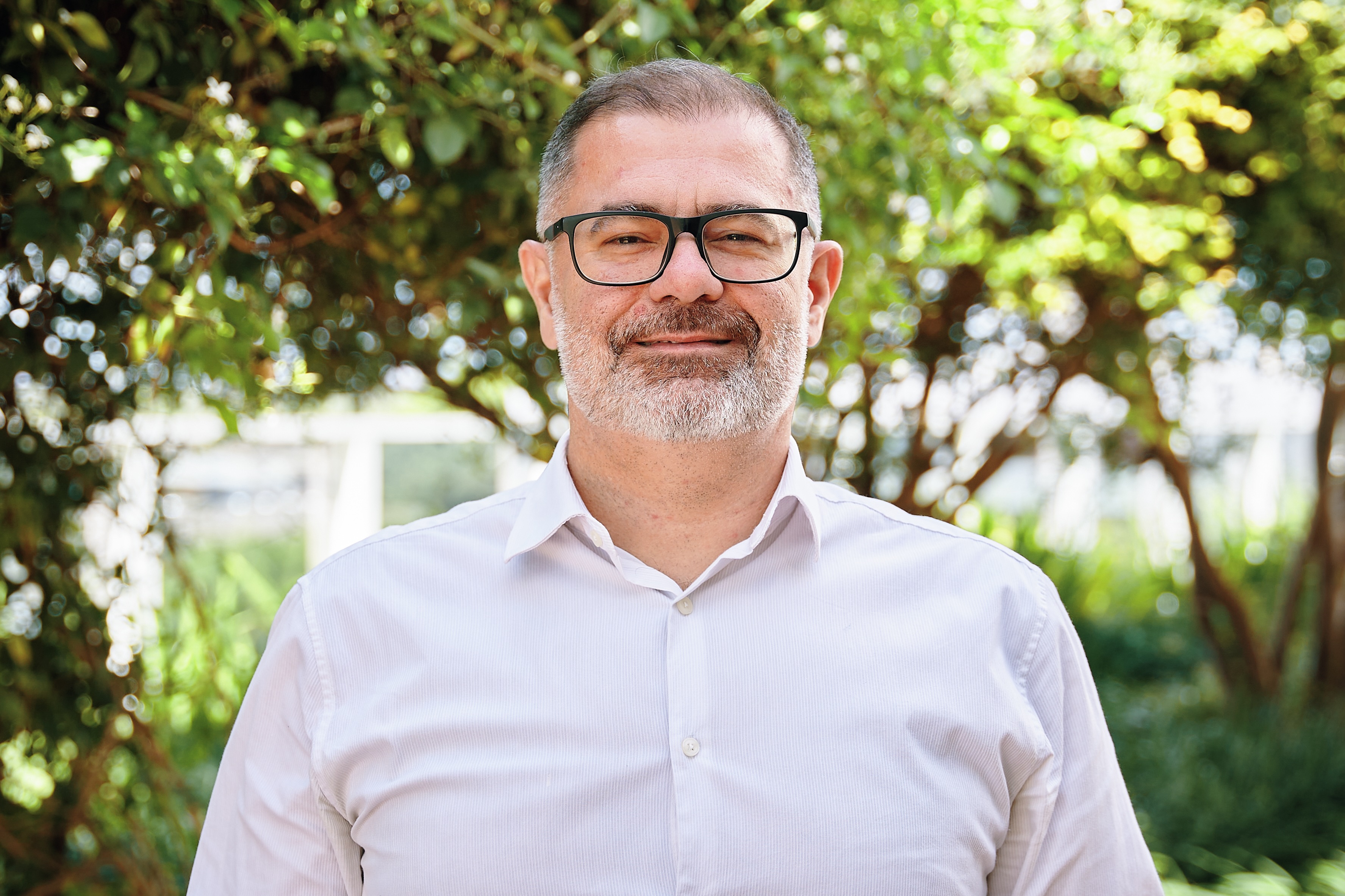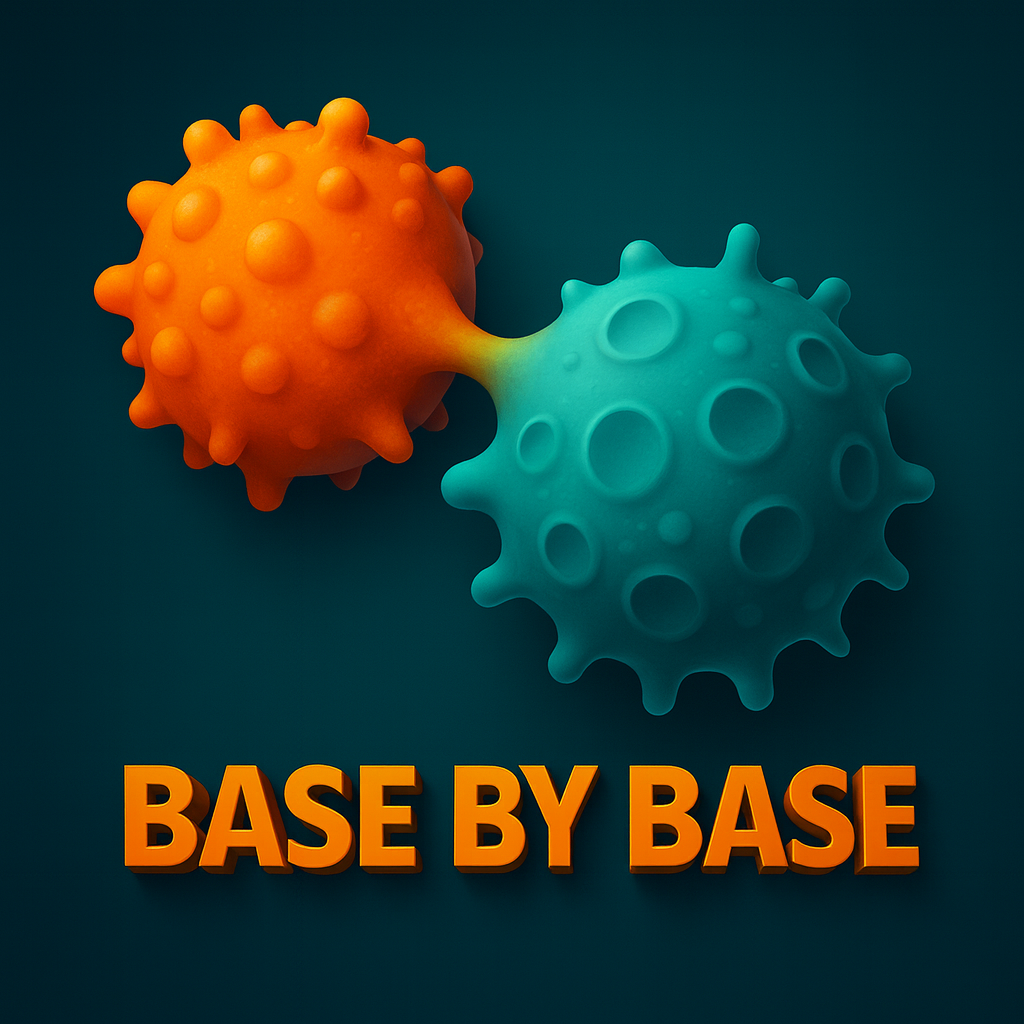Episode Transcript
[00:00:00] Speaker A: Foreign.
[00:00:14] Speaker B: Welcome to Base by Base, the papercast that brings genomics to you wherever you are. Thanks for listening and don't forget to follow and rate us in your podcast app. So today we're diving into one of the most persistent mysteries in immuno on collo. It's this paradox of the invincible tumor.
[00:00:31] Speaker A: Right.
[00:00:32] Speaker B: We know CD8T cells are the immune system's, you know, precision fighters. They're essential for clearing cancer. But so often in solid tumors, they just stall out. The therapy fails, and it really comes.
[00:00:44] Speaker A: Down to a fundamental physical problem.
We've known for years from imaging studies that for antitumor immunity to work, you need physical proximity.
[00:00:53] Speaker B: The T cells have to get right up close.
[00:00:55] Speaker A: Exactly. They have to be within, say, 20 to 100 micrometers, a microscopic firing range. That's how they form what's called the immunological synapse.
[00:01:02] Speaker B: It' is everything. But here's the technological blind spot. And this is what our deep dive is really all about today. For decades, when scientists get the tumor microenvironment ready for these, you know, high tech analyses like single cell RNA sequencing or flow cytometry, right, they focus entirely on isolating single cells. They use these really aggressive enzymes to break all the tissue down. And then they use a technique called single cell gating to actively throw out anything that looks like a physical clump.
[00:01:32] Speaker A: I mean, they're essentially treating any of those cell aggregates as just technical noise.
[00:01:37] Speaker B: Just a mistake.
[00:01:38] Speaker A: Yeah, a failure of the preparation. So they systematically remove them just to get clean data for the sequencer.
[00:01:44] Speaker B: But what if those clumps aren't noise? What if those stable physical clusters are actually the. The functional core of the whole immune response? The T cells that are actively locked onto their targets right in the middle of the fight.
[00:01:56] Speaker A: If that's true, and it means we've been throwing away the most potent, most tumor specific T cells this whole time.
[00:02:02] Speaker B: And that changes everything. I mean, it completely changes how we should approach things like adoptive cell therapy.
[00:02:08] Speaker A: That is the compelling challenge this research tackles. We're exploring a paper that managed to isolate these previously lost clusters.
And, well, they confirmed that these clusters hold a T cell population that is dramatically more powerful than anything we get using our conventional methods.
[00:02:26] Speaker B: This could really unlock the next generation of cancer therapies. So let's unpack this.
[00:02:31] Speaker A: Okay. So today we're celebrating the innovative work led by Sophia Bines Molaro, Johanna Veldman, Daniel S. Pieper and their colleagues.
This is a team primarily based at the Netherlands Cancer Institute, which Is part of the ENCODE Institute and their work was published in Nature.
[00:02:47] Speaker B: A huge deal.
[00:02:48] Speaker A: It is. Their research fundamentally advances how we understand these tumor immune cell interactions. They're basically arguing that these cellular aggregates, the cl, aren't noise, they're the functional units we should have been studying all along.
[00:03:01] Speaker B: So to really get the impact here, we need to set the clinical stage. We're talking about treatments like adoptive cell transfer or act, where you take T.
[00:03:08] Speaker A: Cells out of a patient, grow them up and put them back in.
[00:03:11] Speaker B: Exactly. And also immune checkpoint inhibitor therapies.
The success of both of these, well, revolutionary approaches, it's totally limited by the function and the persistence of the T cells that actually get into the tumor.
[00:03:26] Speaker A: If the T cells don't get in there, or, and this is the crucial part, if they can't establish and maintain that physical contact, the treatment is going to fail.
[00:03:35] Speaker B: And that's the paradox. Right. We know the T cells are fighting, but the standard lab prep methods, the ones we developed to make the sequencing.
[00:03:42] Speaker A: Machines happy, they were designed to actively destroy the very physical interactions that are necessary for the T cells to function.
[00:03:50] Speaker B: It's sort of a classic case of the technology getting in the way of the biology.
[00:03:54] Speaker A: It is because single cell sequencing requires perfect singlets. The methodology unintentionally forced us to discard the most biologically relevant structures. So this study, it really aimed to.
[00:04:04] Speaker B: Bridge that gap between the molecular data and the actual physical fight.
[00:04:08] Speaker A: Yes. Their hypothesis was that the physical cluster is the immunological synapse just, you know, captured in the act.
[00:04:14] Speaker B: So how did they test that? They must have had to completely rethink how they process the tushy samples.
[00:04:19] Speaker A: They did. They analyzed 21 human melanoma metastases, which is a really good tumor type to study for this because it's known for having a lot of T cells and responding well to immunotherapy.
[00:04:31] Speaker B: Okay, so the methodology here is really the star of the show. They have to break the tissue down to get the cells out, but they also have to preserve these fragile cell to cell bonds. How on earth did they do that?
[00:04:41] Speaker A: They did something that sounds simple but is actually a calculated risk. They just drastically reduced the enzymatic digestion time down to a maximum of 30 minutes.
Now, less digestion time could mean a lower cell yield, maybe lower viability, but it significantly minimizes the chance that these clusters will break apart.
[00:04:59] Speaker B: Okay, so they get these partially digested samples, then what?
[00:05:03] Speaker A: Then they hunt for the clusters using flow cytometry. They're looking for what they call double positive events. So cells that are positive for tumor markers like CD146, and at the same time positive for T cell markers like CD8.
[00:05:16] Speaker B: So they're isolating things that look like a T cell stuck to a tumor cell.
But I mean, how do you prove they're really conjugated in a meaningful functional way and not just, you know, some randomly sticky debris?
[00:05:27] Speaker A: Ah. And that is where the high resolution visualization comes in. They used a technique called imaging flow.
[00:05:33] Speaker B: Cytometry, the Image Stream Mark 2 system.
[00:05:35] Speaker A: That's the one. And this lets them capture incredibly high quality images of thousands of these clusters. And with those images, they could actually see the relocalization of adhesion molecules, markers like HLA, ABC and CD58.
[00:05:51] Speaker B: What does that mean, relocalization?
[00:05:53] Speaker A: It means these molecules physically move to the exact interface, the point of contact between the two cells. And that only happens when a true immunological synapse is forming. That visual confirmation was the proof. It showed they were isolating stable functional interactions.
[00:06:07] Speaker B: That's such an elegant bridge. They go from just identifying a clump to confirming it's a functional unit.
[00:06:13] Speaker A: Precisely. And once they had that confirmation, they could move on. They separated the T cells that came from these clusters from the T cells that were just found floating around as singlets. And then they subjected both groups to combined single cell RNA sequencing and T cell receptor sequencing, which would let them.
[00:06:29] Speaker B: Compare the molecular state and I guess, the clonal identity of the T cells. All based on whether they were in a cluster or not.
[00:06:35] Speaker A: Exactly. And then came the final test function. Could these cells actually kill?
They tested them in the lab against the patient's own melanoma cells, and then the ultimate test in vivo, using adoptive cell transfer in humanized mouse models.
[00:06:50] Speaker B: And the results, I take it, were pretty definitive?
[00:06:52] Speaker A: Absolutely. They completely supported this idea that we'd been missing the functional epicenter of the immune response.
[00:06:58] Speaker B: So finding number one, finding one was.
[00:07:00] Speaker A: Just establishing that this clustering isn't rare, it's universal. They successfully isolated These heterotypic clusters, CD8 T cells bound to tumor cells or to antigen presenting cells, APCs from every single one of the 21 human melanoma samples they looked at.
[00:07:16] Speaker B: Wow. All 21. So this is happening all the time in the tumor.
[00:07:20] Speaker A: It's a pervasive phenomenon.
[00:07:21] Speaker B: But are the clusters just, you know, random sticking, or are they actually driven by specific antigen recognition? That seems like the next critical question.
[00:07:30] Speaker A: And they address that with this really elegant in vitro competition assay.
They Co cultured T cells that were specific for a known melanoma antigen mark one with a bunch of non specific T cells.
[00:07:44] Speaker B: Okay, so a mix of specialist and non specialist cells.
[00:07:48] Speaker A: Right. And they found that the antigen specific T cells just dramatically out competed the others at forming clusters. And think about this ratio. Even when the specific T cells made up only 1% of the total T cell pool, just 1%, they were up to 11 fold enriched in the clusters.
[00:08:03] Speaker B: They isolated 11 times enrichment from such a tiny starting fraction. I mean, that magnitude pretty much proves these physical interactions are driven by specific high affinity recognitions, not random.
[00:08:13] Speaker A: And now for the key therapeutic implication T cells that they isolated from these clusters. When they were expanded using a standard protocol, they showed an average nine fold increased healing activity.
A nine fold increase against the patient's own melanoma cells compared to T cells that were expanded from the singlet pool. This wasn't a small gain. It was a profound increase in lethality.
And it correlated with more of those key cytotoxic cytokines like interferon gamma and TNF?
[00:08:43] Speaker B: A. 9 times boost in killing power just by changing how you select the cells from single cells to physical clusters. That's. Well, that's transformational for act development.
[00:08:52] Speaker A: And this improved function held up in vivo too. In the mouse models with human melanomas, the T cells from the clusters successfully and significantly suppressed tumor growth.
[00:09:01] Speaker B: And the T cells from the singlets.
[00:09:02] Speaker A: These showed essentially no tumor control.
The cluster derived cells were validated as superior therapeutic agents across the board. They saw more T cell infiltration, more activation at the tumor site. Everything pointed in the same direction.
[00:09:15] Speaker B: Okay, so the central question then becomes, what is it about these cells? What's their molecular identity? Why are they such superior killers?
[00:09:23] Speaker A: The CRNA SEQ data gave a fascinating answer to that. The clustered T cells were highly enriched for gene signatures related to both tumor reactivity and kind of paradoxically, exhaustion.
[00:09:36] Speaker B: Right. And also proliferation markers. But why would we be excited about exhausted T cells? That sounds bad.
[00:09:42] Speaker A: Well, in the context of a solid tumor, exhaustion is often a sign of active, prolonged engagement.
[00:09:48] Speaker B: I see.
[00:09:49] Speaker A: The T cells that have been fighting the longest, the ones that are the most clonally expanded, they often get categorized as exhausted. But they aren't necessarily useless. They're more like fatigued warriors.
The goal in immunotherapy is often to find these very specific exhausted cells and then rearm them outside the body.
[00:10:05] Speaker B: They're the veterans of the fight, not the fresh recruits.
[00:10:08] Speaker A: That's a great way to put it. Now the researchers also drilled down even further. They compared T cells clustered with tumor cells versus T cells clustered with APCs. And this gives us a window into the whole dynamic process of immune attack and regulation.
[00:10:21] Speaker B: What did they find?
[00:10:23] Speaker A: They found this critical functional split. They looked at T cells that had the exact same T cell receptor. So they came from the same antitumor clone, but their behavior changed completely depending on their partner.
[00:10:34] Speaker B: Okay.
[00:10:35] Speaker A: When they were conjugated to antigen presenting cells, APCs, like certain macrophages or dendritic cells, those T cells showed a very distinct phenotype.
[00:10:45] Speaker B: Which was?
[00:10:46] Speaker A: They showed more pronounced exhaustion markers. They were heavily involved in these co modulatory interactions, like PD1 binding to PD L1 or CTLA 4 interacting with CD28.
[00:10:57] Speaker B: Ah, so the immune checkpoints.
[00:10:59] Speaker A: Exactly. It suggests the APC interaction might be regulatory. It could be involved in the initial priming or maybe dampening the T cell response to prevent overreaction. It's an immune checkpoint in action.
[00:11:10] Speaker B: So if the T cell is the fighter jet, the APC is kind of like the pit crew regulating it.
[00:11:15] Speaker A: That's it exactly. Conversely, when those identical T cell clones were found stuck directly to the tumor cells, they look different. They showed fewer exhaustion markers and way more of these strong adhesion interactions like ICAM1ITGL.
[00:11:27] Speaker B: And those are.
[00:11:28] Speaker A: Those are hallmarks of sustained cytotoxic engagement. That phenotype is consistent with a T cell that's actively in the process of delivering the killing blow.
[00:11:38] Speaker B: That detail is phenomenal. It shows the physical context defines the cell's role, even within the very same clone.
So let's bring this back to the clinic. Can selecting for these clusters replace our current methods for act?
[00:11:51] Speaker A: I think that's the biggest implication right now. Enrichment strategies for ACT often rely on sorting for a single marker like CD39, which is often found on tumor reactive T cells. But when the researchers benchmarked cluster sorting against the standard single cell CD39 sorting, the results were just staggering.
[00:12:09] Speaker B: How bad was it?
[00:12:10] Speaker A: Single cell gating for CD39 caused a 91% loss of the functional T cell tumor clusters.
[00:12:16] Speaker B: 91%. So we've been throwing away nine out of every ten of the most promising cells.
[00:12:20] Speaker A: And the reason for this systemic failure? It lies in the underlying molecular state of the cells. The T cells they isolated from. The clusters were profoundly enriched for what's called a TCF7 stem, like exhausted cell state. And this is the cell population that is absolutely critical for ACT success.
[00:12:37] Speaker B: Okay, walk us through that. Why is that TCF7 state, the golden ticket.
[00:12:42] Speaker A: So TCF7 is a transcription factor. It's associated with stemness with self renewal. T cells that maintain this TCF 7 state are the ones that can persist long term in vivo. After they're infused, they keep their ability to proliferate.
[00:12:55] Speaker B: They're the fountain of youth for the therapy.
[00:12:56] Speaker A: Exactly. In contrast, when you sort just for markers like CD39, you often end up selecting for T cells that are terminally exhausted. These are cells that are high in markers like LAG3 and they've lost their TCF7 expression. These cells, they just burn out really quickly. You get very limited therapeutic success.
[00:13:13] Speaker B: So the standard method selects for cells that are basically programmed to fail in the long run. While the cluster isolation method, it selects for the self renewing persistent T cells. This reframes the entire paradigm for how you generate clinically effective T cell therapies.
[00:13:28] Speaker A: The message is just so clear. The physical cluster is not technical noise. It's a phenotypic fingerprint of the most highly functional, long lasting anti tumor response that's available.
These clusters contain the elite TCF 7 STEM like fighters that we need for durable remissions.
[00:13:46] Speaker B: This research really does dramatically reframe how we have to approach tissue analysis in immuno oncology. We have to shift from a focus on, you know, molecular purity to prioritizing functional cellular architecture. The central insight is that these stable phys Clusters of CD8T cells and their targets, they are the functional epicenter of the antitumor response.
[00:14:07] Speaker A: And not only are these cluster T cells far more potent, we're talking a nine fold increase in killing activity, but they're enriched for that specific molecular profile, that TCF7 plus stem like state that is absolutely essential for long term therapeutic persistence and success in adoptive cell transfer.
[00:14:23] Speaker B: And when you consider that the unique gene signature of these clustered T cells was also found to predict patient response to existing TIL therapy, well that has immediate diagnostic it leaves you with a really thought provoking how quickly can we integrate the detection of these specific molecular profiles, these signatures of cluster T cells into our diagnostics to figure out who is likely to benefit most from immunotherapies before they even start treatment? That predictive power is something to truly mull over.
[00:14:52] Speaker A: This episode was based on an Open Access article under the CC BY 4.0 license. You can find a direct link to the paper and the license in our episode Description if you enjoyed this, follow or subscribe in your podcast app and leave a five star rating if you'd like to support our work. Use the donation link in the description now. Stay with us for an original track created especially for this episode and inspired by the article you've just heard about. Thanks for listening and join us next time as we explore more science. Bass by Bass.
[00:15:42] Speaker C: Silent rooms where the shadows breathe Hidden signals underneath every condition Contact Sparks of light in the dark between the fight locked in place but not all.
[00:16:07] Speaker B: Something.
[00:16:07] Speaker C: Deeper taken home what was quiet starts to rise Learning how to to stay alive Clustering the fire where the broken self conspire holding on through every trial Turning distance into survival in the presence.
Clustering the fire.
Crowded storms inside the skin Every ending starts again Worn out fighters still remain Burning through the silent strain if the weakness learns to bend There's a strength we never plan Even when the piece grow slow there is still a way to grow Cluster in the fire where the broken cells conspire holding on through every trial Turning into survival in the numbers we revive we are clustering the f.
[00:18:27] Speaker A: Sa.




